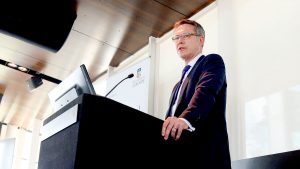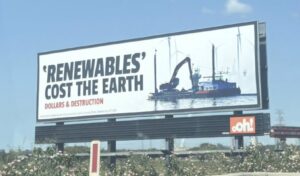One year after AGL Energy’s decision to postpone the planned mothballing of four generating units at its Torrens Island power facility in Adelaide, the gentailer has unveiled plans to replace two of the gas plant’s oldest units with a “fast-start” 210MW reciprocating engine power station, to be known as the Barker Inlet Power Station.
In a statement on Wednesday, AGL said the new power station – set to begin construction in Q3 of this calendar year – would replace two of the four Torrens A turbines, which AGL would progressively mothball from 1 July 2019, once the new plant was complete. The four Torrens B turbines will continue to operate as normal.
AGL said the new plant was specifically designed to provide flexible, efficient and cost-effective “synchronous generation capacity” to the rapidly changing South Australian electricity market, where the 50 per cent renewable energy target had already been met, and surpassed, eight years ahead of schedule.
However, there is confusion about the state’s energy security target policy, prompting AGL to announce just recently that it was suspending investment decisions in the state. Most of the confusion surrounds whether the state is trying to encourage more gas generation, or more battery storage, with its EST.
AGL described the reciprocating power stations as “more efficient” than the existing units, but declined to provide further details to RenewEconomy.
Analysts said, however, that reciprocating engines can use both gas and diesel (possibly economic given high cost of gas), and could be more amenable to the expected shift to 5 minute settlement. However, they provide very little inertia – real of otherwise.
In a statement, AGL said there will be 12 reciprocating engines capable of generating approximately 18MW of output each and “operating at high efficiency with a lower heat rate than other forms of fast-start plant currently available.”
“These units are capable of operating at full capacity within five minutes of start, providing a rapid response to changes in renewable generation supply,” said AGL executive general manager of group operations, Doug Jackson on Wednesday.
The purchase fits in with AGL’s prediction that the energy transition will by-pass baseload gas generation and rely only on peaking gas plants as the energy industry switches from coal to large scale renewables. However, AGL intends to burn coal at the Loy Yang A power station until 2048.
AGL said in December 2014 that it would shutter four out of eight of the Torrens Island power station’s generating units – a group of the plant’s “older units” (built nearly 50 years ago) known collectively as ‘A station’, with an aggregate capacity of approximately 480MW.
“Based on the current market outlook AGL has decided that the Torrens Island A station will be mothballed in 2017,” said AGL Group general manager of merchant energy, Anthony Fowler, at the time, adding that the decision would be reviewed if those conditions – including rising gas prices – changed materially.
Then, in June 2015, the company revealed plans to build a state of the art carbon capture plant at Torrens Island, in a deal with French-based industrial gases company, Air Liquide. The CCS plant was expected to capture and purify up to 50,000 tonnes of CO2 emissions from the 1280MW power station’s exhaust a year.
In a statement this week, AGL CEO Andy Vesey said the decision to move ahead with the Barker Inlet development reflected the company’s long-standing commitment to South Australian customers and to creating a secure energy system as the market transitions away from fossil fuels.
“Torrens A is now 50 years old. Our decision in June 2016 to defer its previously planned mothballing reflected the importance of maintaining security of supply in South Australia following the withdrawal at short notice of other thermal power stations,” Vesey said.
AGL also noted that the gas plant development followed the company’s commitment in recent months “to develop the 200MW Silverton Wind Farm in New South Wales and we hope the 460MW Coopers Gap Wind Farm in Queensland will soon follow suit.”








